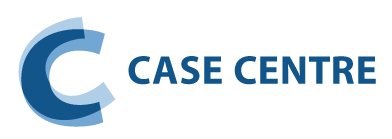


- Not connected
- |
- Login

Valeant Pharmaceuticals International, Inc. (A and B)

- English
- Finance,
- Governance,
- Debt financing,
- Acquisitions,
- Market reaction
From 2008 to 2015, Valeant Pharmaceuticals International Inc. (Valeant) was a Wall Street darling under the leadership of CEO Michael Pearson. The company’s stock price soared as Pearson went on an acquisition spree. Critics questioned Valeant’s capacity for organic growth and its lack of commitment to research and development (R&D). In October 2015, investors began losing confidence when Valeant was subpoenaed to testify before the U.S. Senate Committee about its price-gouging practice. On-going investigations by the U.S. House Committee and Attorney’s Offices regarding Valeant’s patient assistance program and business relationships with Philidor Rx Services also contributed to the company’s downfall. In May 2016, Valeant hired Joseph Papa to replace Pearson as CEO. One of Papa’s top priorities was to pay down the $30 billion debt amassed to finance the company’s acquisitions. In Case (A), students learn about the company’s executive incentive compensation philosophy, acquisitions, and governance practices and are asked to assess the financial impact of Valeant’s acquisitions. In Case (B), students are asked to identify the factors driving Valeant’s stock price down and to assess the company’s ability to pay down its $30 billion debt.
- Healthcare
- Impact of acquisitions on financial leverage and performance;
- Debt repayment;
- Turnaround action plans;
- Corporate governance;
- Executive compensation;
- Stock price response to events
The teaching objectives of Case (A) include giving students an opportunity to (1) assess the pros and cons of Pearson’s equity-based incentive compensation and (2) assess the impact of Valeant’s acquisitions on the company’s financial position and performance. Appendix B of Case (A) gives students an opportunity to learn about Valeant’s governance practices. The teaching objectives of Case (B) include (1) identifying factors that drove Valeant’s stock price down by over 90% between October 2015 and April 2016 and (2) determining whether Valeant will be able to pay down its $30 billion debt. To answer this question, students must analyze Valeant’s financial position, financial performance, and cash flow.
- Fundamental financial assessment and ratio analysis
- Corporate governance practice
- Stock-based executive incentive compensation
- Volatility of stock price reaction to events


